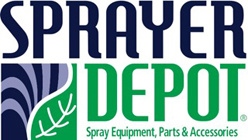Contributed by guest blogger: Pete Gustin, Valley Industries
Airblast sprayers (also known as air assist sprayers) use a fan to atomize spray droplets, which allows the droplets to be carried further, thus maximizing the chemical coverage of trees, foliage and produce. Discover 3 hidden benefits of airblast sprayers that may help minimize equipment and labor costs, while simultaneously improving spray results:
-
One sprayer does it all Ten years ago, a typical "hobby" farm most likely grew a single crop such as soy bean or corn (for feed), which was sold through a large co-op or food broker. Today, many of those same farms are growing multiple crops such as beans, apples and grapes which are sold through local farmers' markets. As a result of having multiple crops, today's grower has to spray a number of plants of variable sizes, row distances and application requirements. To do this, many growers have a few types of sprayers and and use them for specific applications. Due to its versatility, an airblast sprayer can reduce the need for multiple types of sprayers. Instead of using a boom sprayer for beans, a high-pressure handgun sprayer for trees and an additional small tractor for getting through narrow rows of grape vines, one airblast sprayer can be used to spray almost anything, even multiple rows at the same time, if necessary.

-
Do more in less time Airblast sprayers can spray an area in less time than either a handgun or boom sprayers. They can be one-way (one-sided) or two-way (two-sided). Round two-sided fans are used for spraying both left and right sides while driving through a row of trees or vines and often offers a one-side volute that can be aimed down at multiple rows of shorter plants.Canon-type fans are used for aiming at tall trees, through green houses or down across multiple rows.
-
Decrease downtime
Airblast sprayers use only a small amount of water to cover large areas; very little operating time is lost to refilling.
 In some situations, airblast sprayers can cut the cost of equipment, maintenance and labor over the use of traditional spray equipment.
In some situations, airblast sprayers can cut the cost of equipment, maintenance and labor over the use of traditional spray equipment.

.png?width=280&name=SameDayShippingGuarantee-New%20(1).png)



